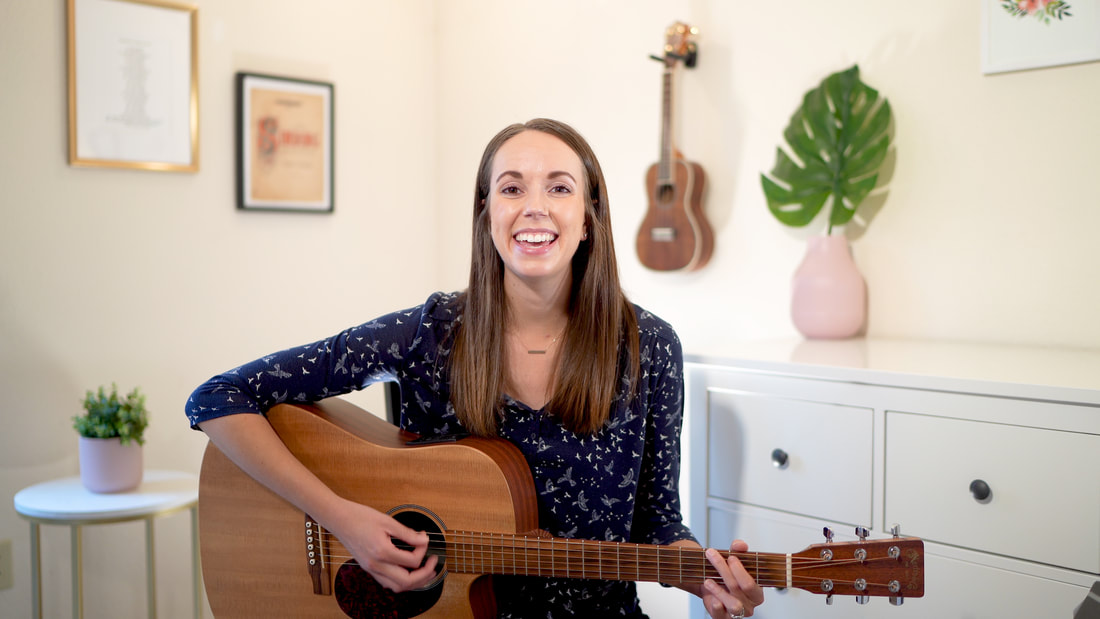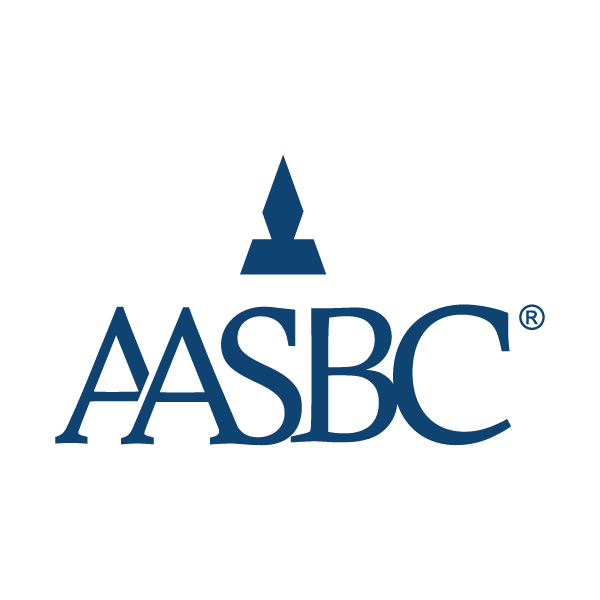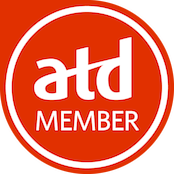|
By guest author Alexis Baker, MT-BC with Bridgetown Music Therapy “I think music in itself is healing. It’s an explosive expression of humanity. It’s something we are all touched by. No matter what culture we’re from, everyone loves music.” You may know music is powerful and beneficial to humans, but maybe you are unsure how to utilize it as a meaningful activity in your care home. If so, I’ve got some ideas for you. Music is a wonderful tool for connection and engagement! It’s kind of like a vitamin—a little bit everyday does wonders to nourish the body, mind and soul. Music can be a daily activity for residents, and I’m going to share 7 ways to engage residents through music. #1: SingEven if you don’t describe yourself as a “singer,” we each have a voice and can use it to sing. Did you know the activity of singing has a ton of benefits? In many ways, singing is similar to exercise. It’s an aerobic activity, so it gets more oxygen into the blood leading to better circulation which can cause improved mood. Singing causes the release of endorphins, which give us that wonderful “lifted” feeling often resulting in stress relief. Also, because singing requires deep breathing, a natural result is often reduced anxiety. It's as simple as turning on a song and singing along. Take advantage of free or low-cost resources like YouTube or Spotify. Create a playlist of you and your residents’ favorite tunes to sing together. Learn the lyrics of a few songs together so you can sing a cappella when you aren’t able to conveniently turn on the music. Another more formal way to regularly sing would be for your residents to receive music therapy services. #2: PlayDo you or your residents own any musical instruments? Pull them out and invite them to play. Tell them not to worry about sounding good or playing correctly. They don’t necessarily need to know how to play. Prompt them to start out by exploring the instrument and see what sounds they can make. Instrument play is fun and can provide opportunities for playfulness and self-expression as well as physical movement. Musical instruments can be played on their own or with accompaniment music. Small percussion instruments like maracas are generally easy to pick up and play without any previous knowledge or experience. Just turn on some music, have fun and jam out with the instruments. Some of our favorite older-adult friendly instruments to use include maracas, tambourines, jingle bells, eggs shakers and paddle drums (check out WestMusic.com for quality instruments at reasonable prices). For a couple of more unique instrument options, check out an Easycussion pentatonic xylophone, Suzuki QChord, or an ocean drum. #3: DanceMusic and dance go hand in hand. Because music is a natural motivator for the physical body, most people can easily pick up the rhythm of a song by tapping their toes or bobbing their head to the beat. Sometimes we do this without even thinking! Movement and dance are the body’s natural response to rhythm. So, turn on some music and get dancing with your residents! Choosing songs that are familiar or well-known to residents can be helpful but don’t shy away from exploring new-to-you and different types of music. You never know what new songs or styles you’ll discover. To help get you thinking here are some genres of music you could dance to: big band, jazz, rock’n’roll, folk, bluegrass, country western, classical, rhythm and blues, gospel, pop, Broadway showtunes, soul, funk, disco… Remind residents that while formal dances like the waltz, tango or cha-cha-cha are wonderful, they are not the only way to move the body to music. Suggest to residents they try making up their own moves, or try something simple like swaying, shuffling, or doing seated movement to music. They can try stretching, exercising, or simply doing rhythmic body percussion like clapping, snapping, patting, stomping, kicking, tapping, marching, shaking, waving, etc. It’s a time to get creative and have fun! #4: Listen and ReminisceListening to music can be an enjoyable activity all on its own. Find a playlist the residents living in your care home enjoy, or create a playlist with their favorite songs. Listening to music is an excellent activity for relaxation or brain stimulation. It can be a passive, receptive experience by simply listening. Or, it can be an active, engaging experience by discussing the lyrics and various elements of the music, such as the sound, feel, different instruments involved, etc. There is no right or wrong way to listen to music. Do what feels best and what your residents enjoy most. Listening to music also function as a great accompaniment to other activities such as meal time, physical movement, or doing an art project. One word of caution: beware of over-stimulation using music in this way. Many activities require a great amount of focus, and some types of music can actually lead to the brain having too much to process at once. Try to match the musical energy to the energy level of the activity. Instrumental (or music without lyrics) can work well for times when your residents will need to talk during the activity. Music can also be an amazing catalyst for reminiscence. To start off, choose songs associated with positive, meaningful memories. Observe your residents as you listen together and consider asking a couple questions about that song afterwards. For more info and practical tools, I recommend the book Music, Memory, and Meaning written by a few of my music therapist colleagues! #5: RelaxMusic can be a wonderful tool for relaxation. We all find different types of music calming for us, and the music we find relaxing can change throughout our lives. It’s important for you to consider and choose music that’s calming for your home environment and residents. I use music as a structured space for deep breathing, gentle stretching, guided relaxation, and meditation. There are different techniques for each of these; however, don’t get bogged down in the how-to. Begin by experimenting to see what it’s like using music to assist in relaxation, and then go from there. If you’re at a loss as to what kind of music to play for times of intentional relaxation, try looking up a playlist of the type of music spas use during treatments such as massage therapy. Nature sounds or ambient music can work beautifully to calm mind and body. #6: RecordThis is a simple activity for you and the residents living in the home. It’s a reminder to capture those moments of music making together! With resident authorization, you could use the voice memo app on your phone, your phone’s camera to video record, or write down a special moment in a notebook. This is a great way to share this experience with residents and they can choose to share this with their family members and friends. They will appreciate it, and you’ll be grateful for capturing those special, memorable moments of resident bonding through music. #7: Connect with ProfessionalsTo help support you in providing beneficial music activities for care home residents, Bridgetown Music Therapy has created an engaging online music program for senior care homes. As a licensed and board-certified music therapist, my focus is on improving older adults’ quality of life through the intentional use of music. Our high-quality videos are designed to promote active and engaging experiences that include singing, movement and relaxation. We provide life enrichment through meaningful music activities that are enjoyable, easy to engage with, and effortlessly accessible. Our mission is to spark JOY with engaging music classes for older adults, and we would love to be a part of serving your residents! If you’d like to give Bridgetown Music Therapy a try, click here to get started with your free trial. New content is released weekly! Sometimes we just need to be given permission to try something new. So, I hereby grant you full permission to make music with residents! A Few Tips - sometimes we just need to be given permission to try something new. So, I hereby grant you full permission to make music with residents! Additionally, here are a few tips that might further help you push through any initial discomfort or unfamiliarity:
The benefits of music are abundant and far-reaching. Music can create connections and spark joy. Music is fun and engaging. It’s a natural motivator for the mind and body. Music really makes a difference! Connect with Bridgetown Music Therapy on Facebook and Instagram. Interested in services? Visit Bridgetown Music Therapy to become a member [affiliate link].
0 Comments
Your comment will be posted after it is approved.
Leave a Reply. |
RECENT NEWSLETTERSBLOG Archives
September 2023
|
- About
-
Services
- Coaching or Consultation
- Dementia Care Support Services
- Pre-Purchase Assessment
- Pre-Remodel Inspection
- Open Your Home - Full Support
- Open Your Home - Complete Package
- Open Your Home - Existing Care Home
- Open Your Second Home - Essential Package
- Comprehensive First-Year Support Package
- Pre-Renewal Inspection Service
- Training
- Blog
- Podcast
- Resources
- Contact
About Oregon Care Home ConsultingOregon Care Home Consulting & Training is the compass that helps current and future APD adult foster care home licensees successfully navigate the licensing process and have a successful adult foster care home business. ORCHC provides coaching, consultation, training, and ongoing support. This ultimately saves time, reduces stress, and improves compliance, which allows AFH/ACH licensees to focus more time on providing excellent care to seniors and individuals with disabilities.
|
ContactOffice hours by appointment only
Oregon Care Home Consulting LLC 1500 NW Bethany Blvd., Ste. 200 Beaverton, OR 97006 |
terms_and_conditons.pdf
Disclaimer: Oregon Care Home Consulting LLC is not affiliated with the State of Oregon or Multnomah County Adult Care Home Program (ACHP). We are not State licensors, therefore we are unable to require compliance or guarantee your adult care home is in full compliance with current state and/or federal requirements. State and/or County licensors make the final determination of compliance. Additionally, we are unable to offer legal or medical advice, and no guidance provided by Oregon Care Home Consulting LLC should be construed as legal or medical advice. Always consult an attorney or doctor, when necessary.
HOME | ABOUT | TRAINING | SERVICES | CONTACT | PRIVACY NOTICE | TERMS
Disclaimer: Oregon Care Home Consulting LLC is not affiliated with the State of Oregon or Multnomah County Adult Care Home Program (ACHP). We are not State licensors, therefore we are unable to require compliance or guarantee your adult care home is in full compliance with current state and/or federal requirements. State and/or County licensors make the final determination of compliance. Additionally, we are unable to offer legal or medical advice, and no guidance provided by Oregon Care Home Consulting LLC should be construed as legal or medical advice. Always consult an attorney or doctor, when necessary.
HOME | ABOUT | TRAINING | SERVICES | CONTACT | PRIVACY NOTICE | TERMS
© 2018-2023 OREGON CARE HOME CONSULTING LLC. ALL RIGHTS RESERVED.







